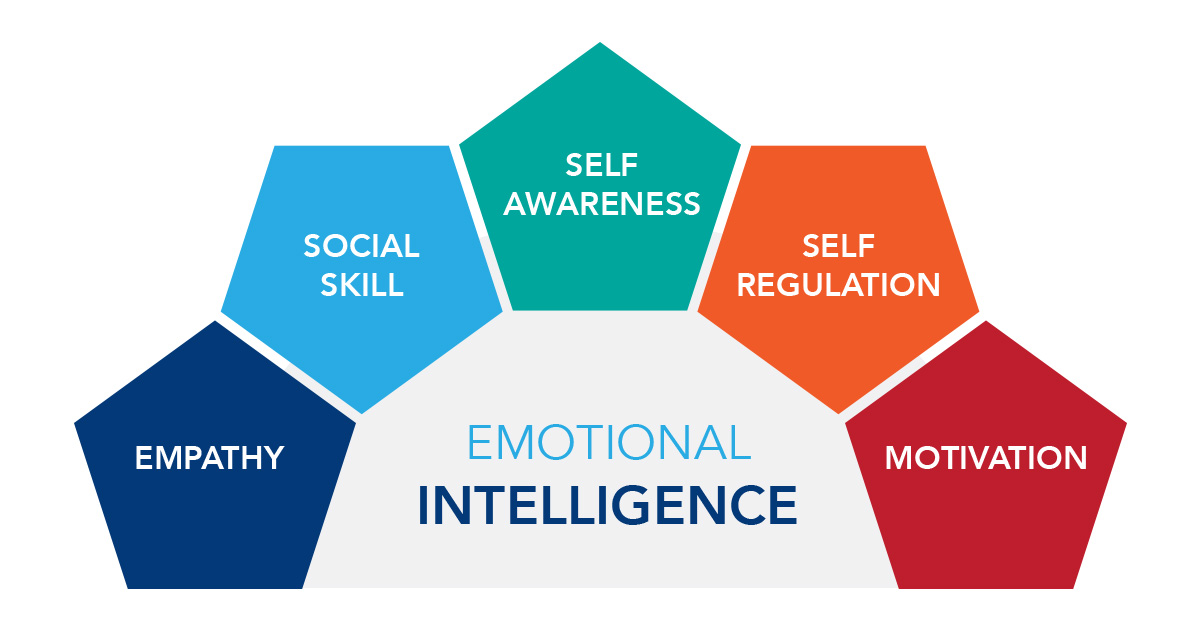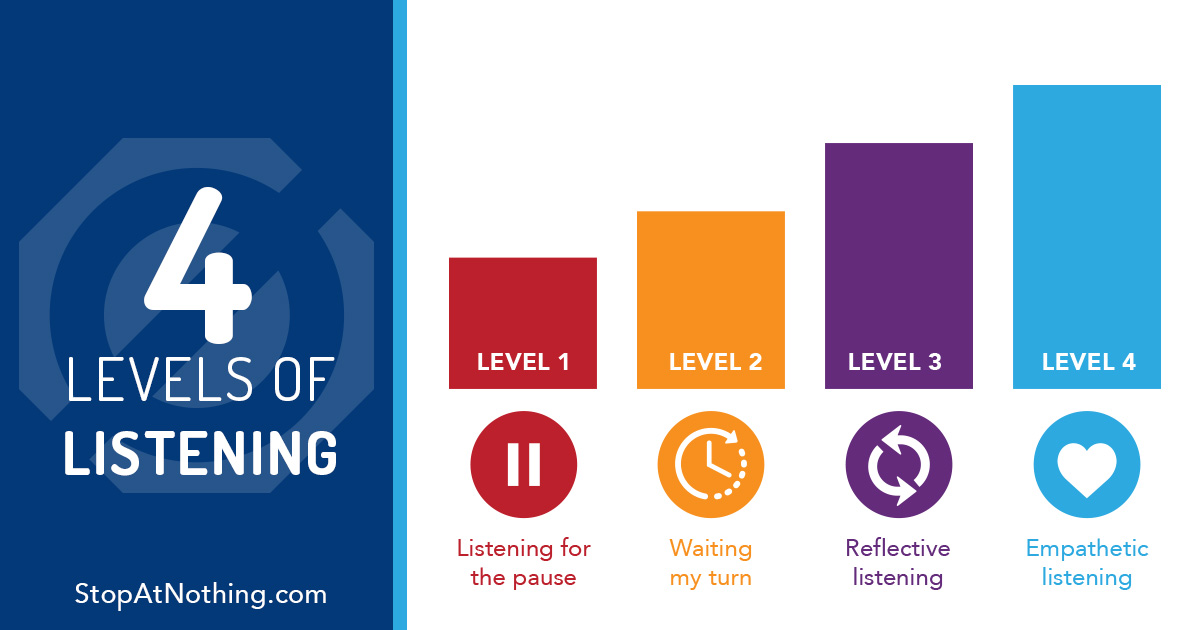By Kevin Haas – Oct 2, 2018 – Leer artículo en Español
Brilliant leaders inspire others. They inspire a team to fulfill a purpose, to achieve excellence. They also foster commitment, rather than compliance.

Like many things, this is an easy concept to comprehend. However, it can be challenging to apply it in an environment filled with meetings, deadlines and heavy workloads.
“When the best leader’s work is done, the people say, ‘we did it ourselves.’ “
– Lao Tzu
Daniel Goleman provides leaders with a roadmap for leadership brilliance in his 1995 book, “Emotional Intelligence.” His research indicated the link between Emotional Intelligence, EQ, and leadership effectiveness. EQ provides a language to describe the intangible dimensions and behaviors that create excellent leadership and associated results.
EQ includes five elements:

Emotional Intelligence Model. Goleman, Daniel. 1995
People want to be seen, heard and noticed.
They want to know and feel they matter. While EQ provides a language and roadmap, it is also the skill of listening that forms the web of connectedness that sparks tangible action.
Some time ago, I worked with a leader named Sarah.
She and her team delivered excellent results three out of four years running. She was a whirlwind of energy and activity and tended to have strong engagement scores from her team. Her peers, on the other hand, had some real issues with Sarah. She tended to get results at the expense of other teams, they said. She was seen as a “lone wolf” that couldn’t be trusted.
Working with the group during an team alignment session, the feedback could not have been clearer. Her direct reports loved working for her, but her peers, and the rest of the organization, had profoundly low levels of trust toward her and their repeated attempts to build bridges and collaborate fell on “deaf ears.” They felt unheard and disrespected.

Sarah’s boss began to hear a troubling amount of “noise” from her peers.
Issues that were small began to escalate. These issues, while normally resolved between Sarah and her peers, were presented to her boss as “trust issues.” Molehills became mountains, and the leadership team became suspicious of Sarah’s motives.
Peers began to assume her intentions were to support her team at the expense of others. Not only were her promotional aspirations off the table, but her job was in jeopardy. Sarah’s inability to listen to her peers effectively was derailing her career.
There is a substantial difference between deeply listening and hearing.
In fact, there are four types of listening behaviors, or levels, of listening that can positively or negatively impact leadership and communication effectiveness:

Level 1 – Listening for the pause: As level 1 listeners, we wait for the other person’s lips to stop moving, so that we can tell them what we think.
Level 2 – Waiting my turn: This is a slightly more effective version of level 1 listening. In level 2 listening, we hear what they’re saying. Then, we tell them what we think.
Level 3 – Reflective listening: Level 3 is active listening. We hear what another says in order to understand what they meant. After someone speaks, we confirm understanding by reflecting back to them what we just heard. We are seeking to understand.
Level 4 – Empathic listening: This is the deepest, and most powerful, form of active listening. We’re listening to what someone says, how they mean it and how they feel about it. When it’s a person’s turn to respond, we confirm our understanding of what was said and how we feel about what was said.
Most of us spend a considerable part of our day in Level 1 or 2 listening. This is “normal” listening.
Assess Your Own Listening
Here is an easy self-test to assess your listening.
In your next conversation, notice what you are thinking while the other person is speaking. Most of us are spending the time “listening,” getting ready to form what we are going to say next! By definition, this is level 1 or 2.
Level 3 and Level 4 require you to be an active listener. This means we focus 100 percent on what the other person is saying to us, and how they feel about it while they are speaking.
Then, we respond not with what we want to say next, but with a short summary of what we thought we heard them express and how they feel about it. We reflect back our understanding.
It is our summary of what we heard that builds the intangible connection with another person. When we put our energy into listening to understand, we build something much stronger than just understanding. We build a connection to that person and they feel heard.
Fortunately, Sarah took her lack of listening feedback to heart.
It was a big wake-up call, as she had no idea of the impact she was creating laterally among her peers. While they had been trying to express themselves to her repeatedly, her lack of listening created a substantial blind spot for her.
She responded by sharing with the team in a very sincere manner what she heard. She used reflective and empathic listening to summarize the feedback that they provided. She also demonstrated an understanding of the unintentional impact she had on her peers and other organizations. Then, she committed to 1:1 meetings with each peer to better understand their perspective and find ways to become a better partner.
Because of her changes, she improved her peer relationships and rebuilt trust.
Her team is proactively working with several peer organizations to align goals and jointly solve problems. And, while there are still natural challenges to resolve in how the teams work together and decisions to make regarding trade-offs, the interpersonal trust is higher with her peers. Her team now feels that this is a collaborative effort. Her intentions are no longer questioned over small issues and the amount of escalation to her boss has decreased substantially. Most importantly, though work remains to be completed, it appears that her job is now secure.
Empathic listening is one of the most powerful “tools” in a leader’s quiver.
It is the “glue” that allows us to manifest the language of EQ in a day-in-and-day-out manner that builds trust and followership. The beauty of listening is that we can use it in each meeting, conversation and email. No additional time is needed; it’s just a change of focus.
“Knowledge speaks, but wisdom listens.” – Jimi Hendrix


